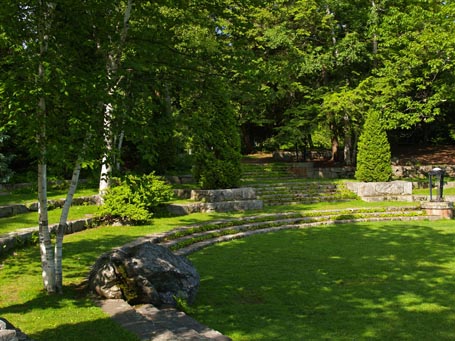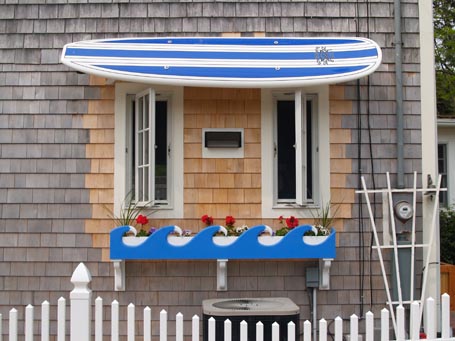 If I had backed farther away when capturing this photo, you might more easily recognize this oft-photographed home. But, then the image wouldn’t appear as Hopper-esque. More importantly, cropping closely helps illuminate all that is going right with the fundamentals of this dreamy dwelling.
If I had backed farther away when capturing this photo, you might more easily recognize this oft-photographed home. But, then the image wouldn’t appear as Hopper-esque. More importantly, cropping closely helps illuminate all that is going right with the fundamentals of this dreamy dwelling.
A simple palette of white on white on white sets the quiet tone. Delicate, attenuated columns appear taller than they probably are, creating a porch that perhaps feels loftier than it is. The end wall likewise appears slender and tall, despite its mere one and one-half story height. The overall effect lends this home poise beyond its modest stature.
Honest building materials and details -- woven side-wall shingles, red-cedar roof shingles, exposed rafter tails, wooden ovolo-edged porch gutters, square-stock balusters -- perform and delight. Landscape materials of driveway shells, a brick footpath, and a white-cedar deck beyond palpably suggest the use each serves.
Ending the porch roof in a hip brings it to a considered end, much the way a hand-drawn line, ending with weight, communicates an intention. Surrounding the porch with a low balustrade creates a semi-enclosed space better suited to containing a front bench than one without a railing. Keeping the front porch a single step above grade makes it approachable. Subtle design gestures make a difference. So, too, does a plum site…
by Katie Hutchison for the House Enthusiast
 I’m drawn to authentic barn cupolas, like this one. Grand, domed cupolas, the type with a belfry or lantern, can be exquisite, but it’s the hard-scrabble, yet graceful, venting cupola on a work building that speaks to me. This octagonal one is outfitted with green slatted louvers and a gently curved, somewhat-conical roof. The white roofing color reflects heat and nicely contrasts the black roofscape and moody sky. Of course, the weather vane on top is a fine form of functional grace, too. Look for another winning weather vane in a future “design snapshot”.
I’m drawn to authentic barn cupolas, like this one. Grand, domed cupolas, the type with a belfry or lantern, can be exquisite, but it’s the hard-scrabble, yet graceful, venting cupola on a work building that speaks to me. This octagonal one is outfitted with green slatted louvers and a gently curved, somewhat-conical roof. The white roofing color reflects heat and nicely contrasts the black roofscape and moody sky. Of course, the weather vane on top is a fine form of functional grace, too. Look for another winning weather vane in a future “design snapshot”.




